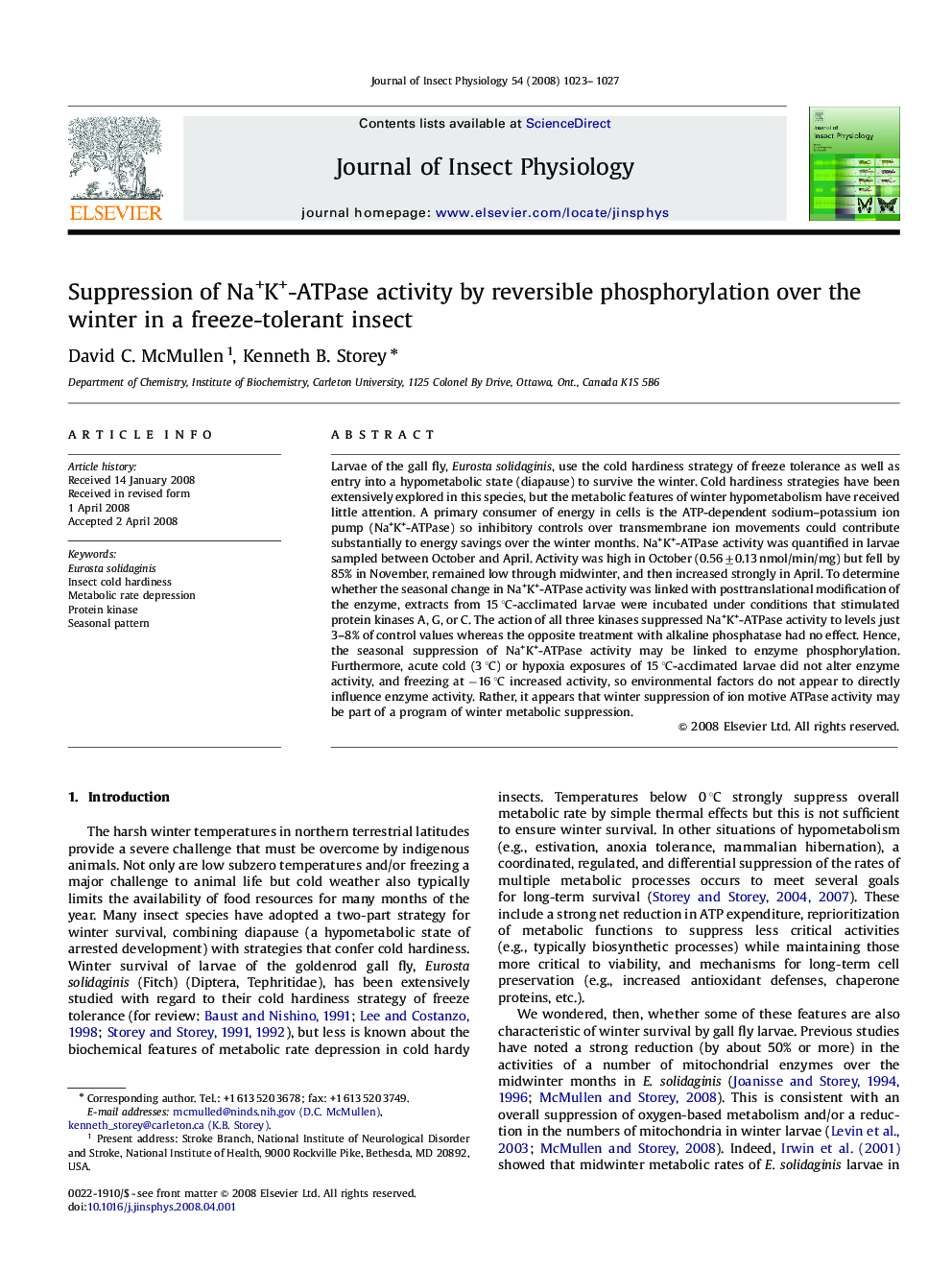| Article ID | Journal | Published Year | Pages | File Type |
|---|---|---|---|---|
| 2841293 | Journal of Insect Physiology | 2008 | 5 Pages |
Larvae of the gall fly, Eurosta solidaginis, use the cold hardiness strategy of freeze tolerance as well as entry into a hypometabolic state (diapause) to survive the winter. Cold hardiness strategies have been extensively explored in this species, but the metabolic features of winter hypometabolism have received little attention. A primary consumer of energy in cells is the ATP-dependent sodium–potassium ion pump (Na+K+-ATPase) so inhibitory controls over transmembrane ion movements could contribute substantially to energy savings over the winter months. Na+K+-ATPase activity was quantified in larvae sampled between October and April. Activity was high in October (0.56±0.13 nmol/min/mg) but fell by 85% in November, remained low through midwinter, and then increased strongly in April. To determine whether the seasonal change in Na+K+-ATPase activity was linked with posttranslational modification of the enzyme, extracts from 15 °C-acclimated larvae were incubated under conditions that stimulated protein kinases A, G, or C. The action of all three kinases suppressed Na+K+-ATPase activity to levels just 3–8% of control values whereas the opposite treatment with alkaline phosphatase had no effect. Hence, the seasonal suppression of Na+K+-ATPase activity may be linked to enzyme phosphorylation. Furthermore, acute cold (3 °C) or hypoxia exposures of 15 °C-acclimated larvae did not alter enzyme activity, and freezing at −16 °C increased activity, so environmental factors do not appear to directly influence enzyme activity. Rather, it appears that winter suppression of ion motive ATPase activity may be part of a program of winter metabolic suppression.
